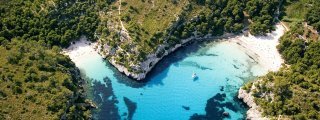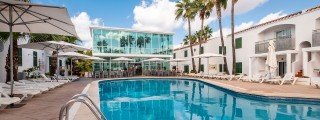Menorcan, Biosphärenreservat

UNESCO declared Menorca a biosphere reserve on the 8th of October, 1993, taking into account the high level of compatibility between the development of economic activities, the consumption of resources, and the conservation of heritage and landscapes that it had preserved, and still does today at an exceptional level. Menorca is an intensely humanized territory, with an extremely rich tradition of rural landscapes. It is home to a remarkable diversity of Mediterranean habitats, where there are plant and animal species exclusive to the Island, some of which are in danger of extinction.
Around the world, there are more than 400 biosphere reserves that experiment with the concept of sustainable development. They are places where human activity is carried out compatibly with the conservation of natural resources and cultural heritage. Menorca is part of the Spanish Network of Biosphere Reserves and is in constant contact with other biosphere reserves that make up UNESCO's Man and Biosphere Program. The Biosphere Reserve of Menorca has as its sister reserve the one found in Lanzarote (Canary Islands).
With an approximate surface area of 700km2 and 200km of coastline, Menorca is divided into eight administrative municipalities and has a censused population of 94,875 from the year 2011. The prevalence of tourism, which in recent decades has become the island's primary economic resource, explains the pronounced seasonality of human pressure, as at times the island plays host to as many as 160,000 people.
Menorca is the most northern and eastern of the Balearic Islands. It is also the rainiest, with nearly 600mm of rain per year, and is often battered by persistent winds. With its elongated and and slightly rectangular shape, it spans nearly 53km from east to west and lacks any high elevation mountains. Its highest point is only 358m (el Toro).
More info: www.biosferamenorca.org



